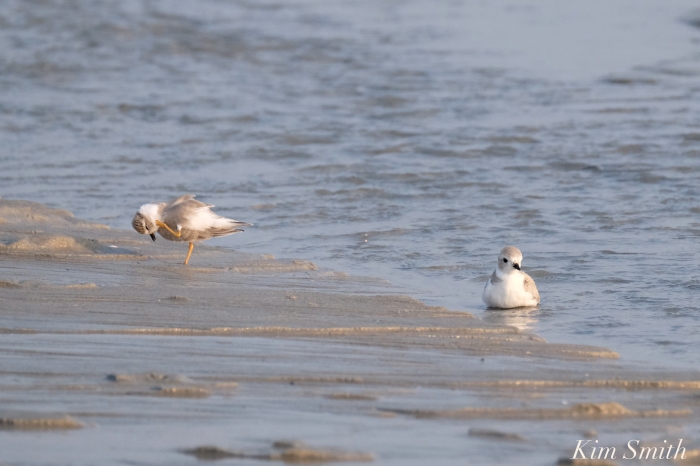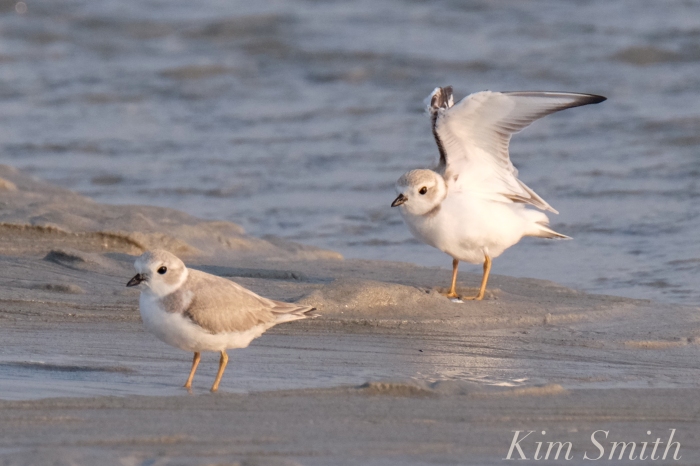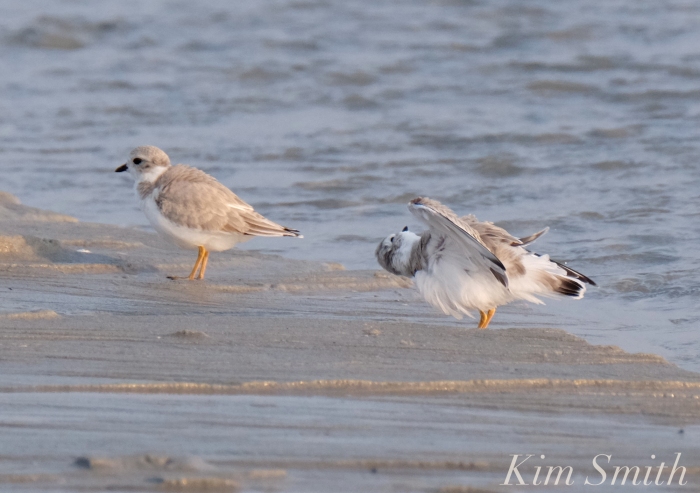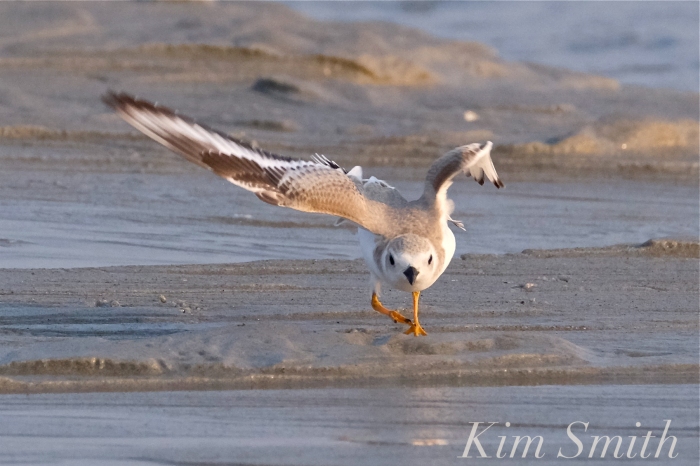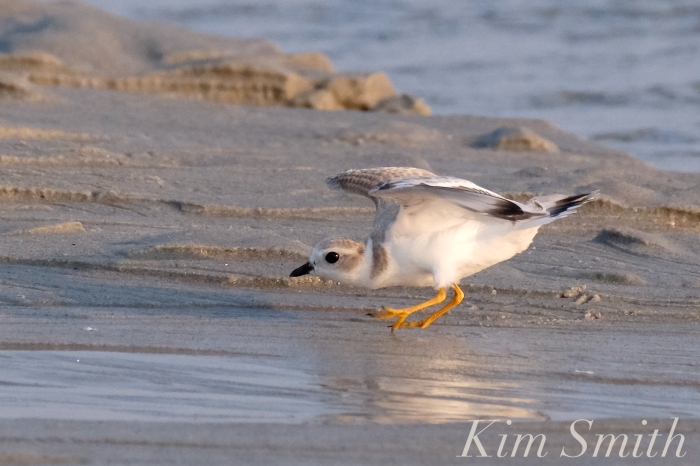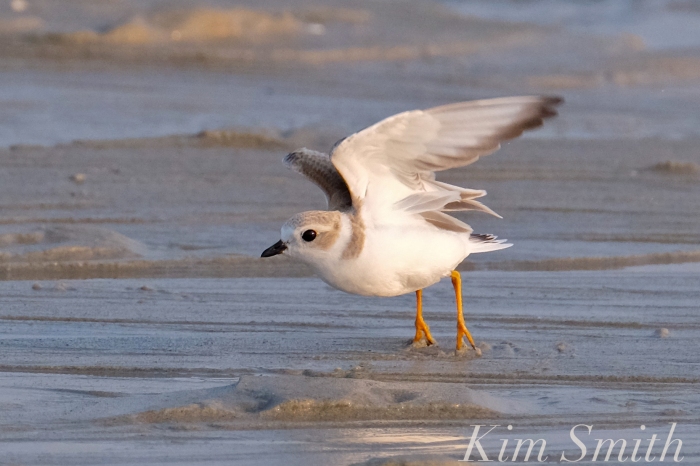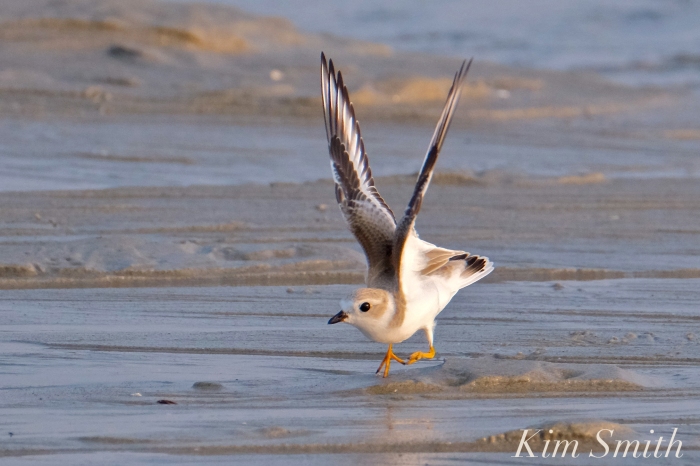Eclipse Day was a dream day filming wildlife on Cape Ann. I did the usual early morning stops at my “migrations stations,” but because I had taken the afternoon off to see the eclipse, I got to film in the afternoon, too, which I don’t often get a chance to do. First stop was Good Harbor Beach to see a beautiful subdued and rosy-hued sunrise.
The Tree Swallows were everywhere, in dunes, on the beaches, lined up on telephone lines, in meadows, and marsh. I filmed and photographed that hullabaloo for a bit, along with a dozen other species of migrating shorebirds and songbirds; there are simply too many images for one post. I’ll share these migration photos in the upcoming days.
Tree Swallows Biting and Fighting
The most wonderful of all was coming upon a tiny flock of Piping Plovers. Initially I thought only two, then a third joined the scene, and then a fourth!
One was definitely a juvenile, about the same age as would be our Little Chick. The PiPl were bathing, grooming, and foraging in the intertidal zone while also being dive-bombed by the Tree Swallows. This is behavior that I filmed last year as well. Tree swallows, although beautiful, are the fightenist little tuffies you’ll ever see. They’ll fly straight at other birds, biting one of their own kind, Barn Swallows, and plovers alike.
PiPl bath time
The PiPl that looked just like Little Chick also did the funny flight take-off dance that we all observed of LC. He flew around in a circle, backwards and forwards, spreading and unspreading his wings, and hopping up and down. It’s very comical and I can’t wait to share the film footage and storybook. Anyway, the little traveler I encountered on Eclipse Day was doing the PiPlover flight jig for an extended period of time.
Doing the Jig!
I stayed to watch the Plovers for a bit longer and then finished walking the length of the beach. On my return walk I was surprised from a quiet reverie to hear a flock of Plovers piping. I looked up and before I could turn my movie camera back on, a group of a dozen Piping Plovers flew past. Happy Day!
Tree Swallows Massing 
 Eclipse Day Sunrise Good Harbor Beach
Eclipse Day Sunrise Good Harbor Beach
Backlogged with wildlife photos, more to come. Some wonderful surprises!


